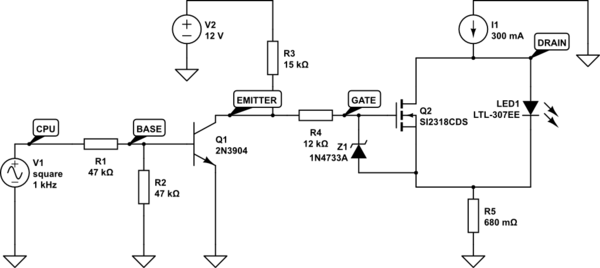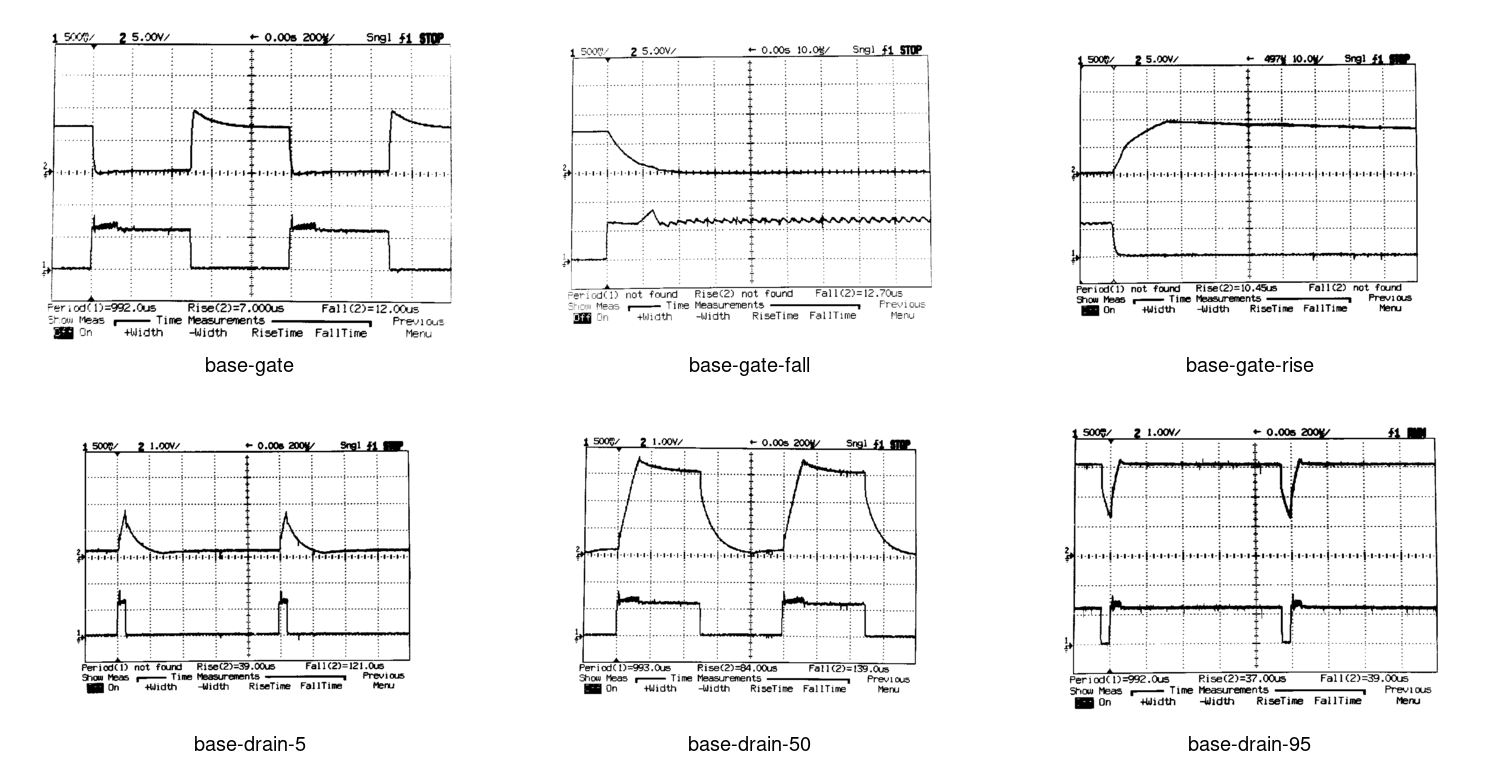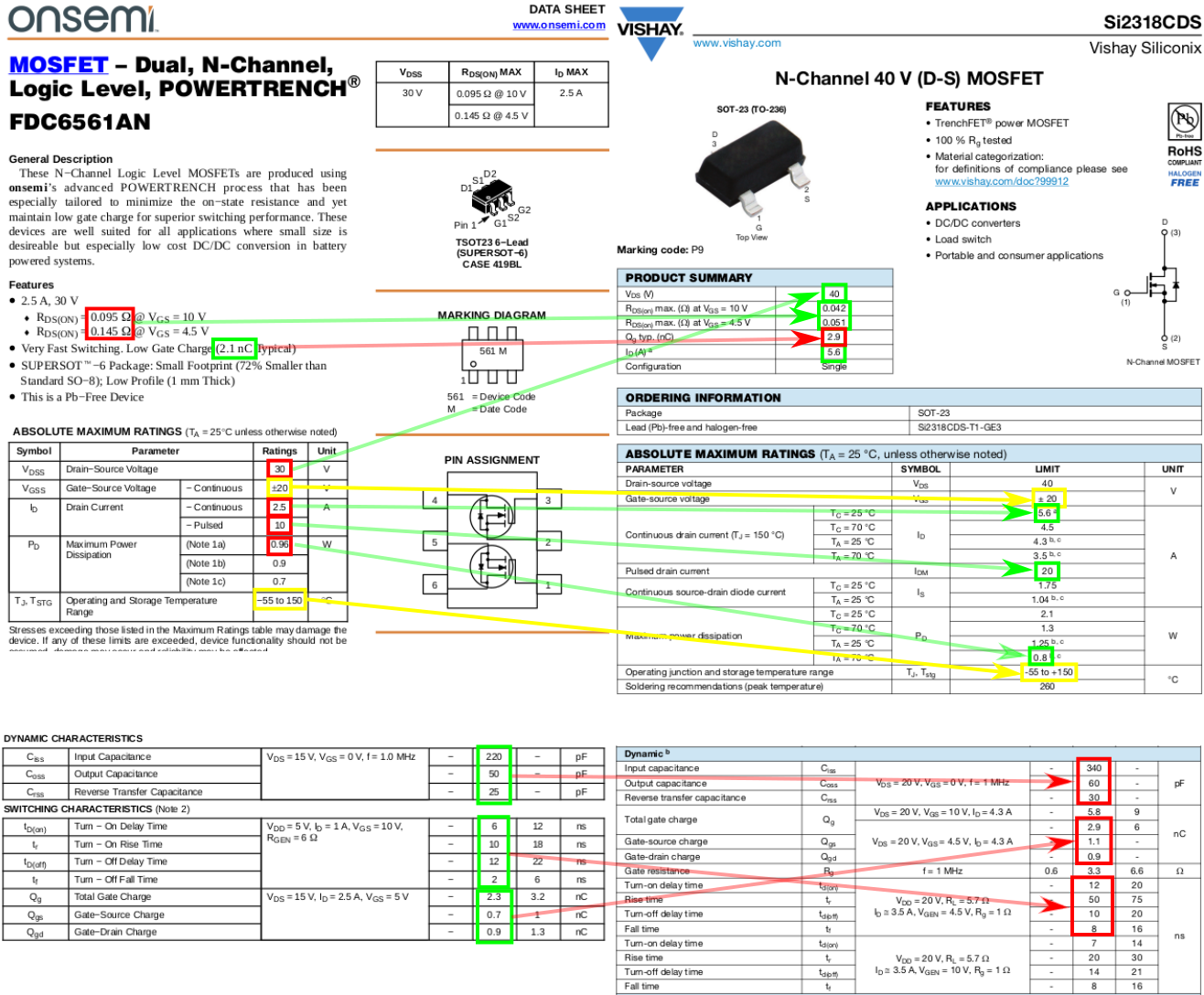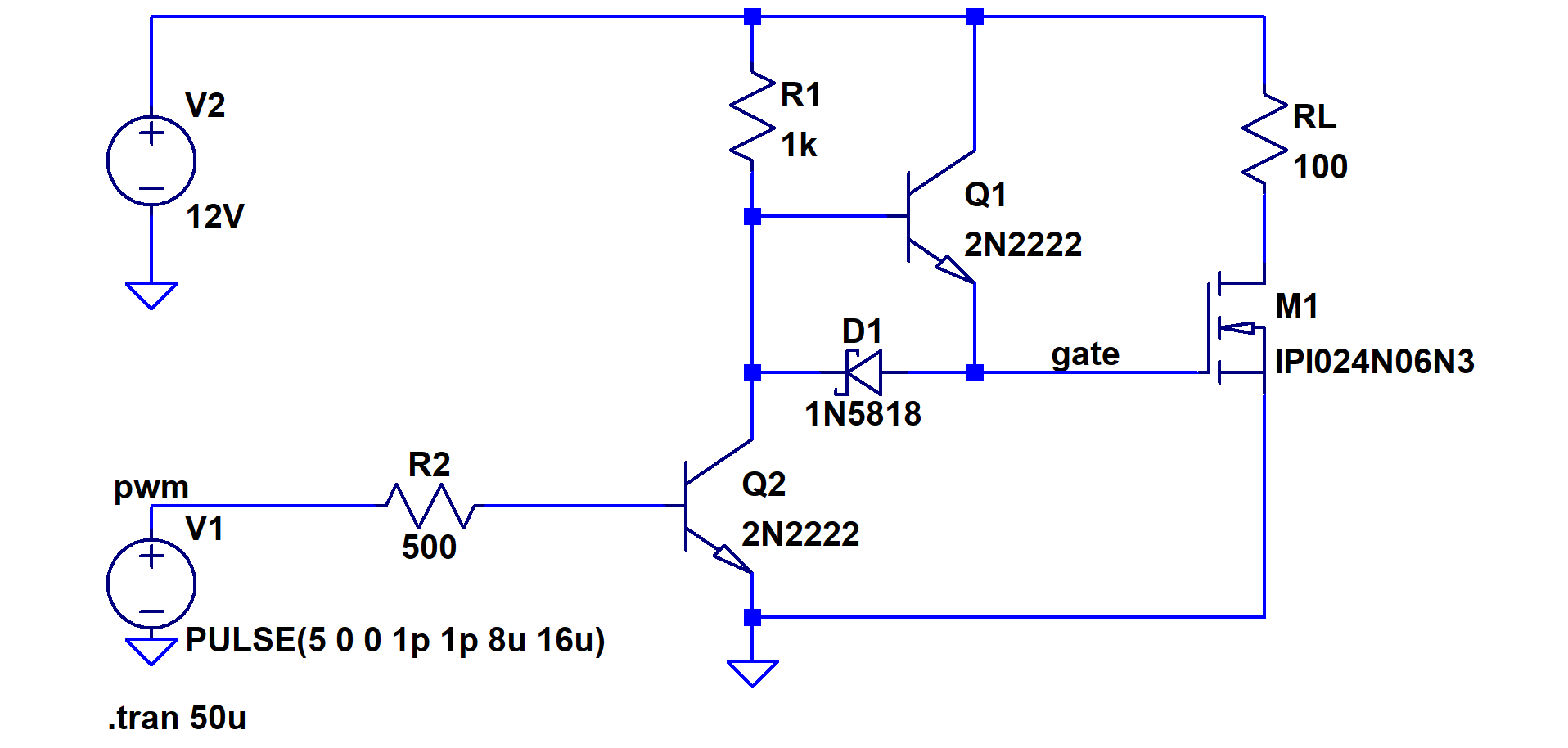I am designing a commercial LED driver to replace one which is no longer available, and because of supply chain issues I'm trying to select "maximally available/maximally substitutable" parts. The driver is a parallel FET shunt LED driver, made with a stack of four MOSFETs shunting four LEDs under PWM at 1 kHz, under a constant current source of about 0.5 A, perhaps as high as 1 A.
Question: I am considering replacing an FDC6561AN (Q2 in diagram below) with (two) SI2318CDS and have compared their datasheets (see below). My understanding is that for this circuit the most important parameter is RDS(ON), as this controls the power used by the part: when the LED is off, the MOSFET takes the whole current. The old part is 145 mΩ, new part 51 mΩ thus power loss is about a third: excellent. The only parameters which are worse are the gate charge, and various timings, which are higher, but all in same order of magnitude in nC, ns, pF. How important is this? I believe at 1 kHz they are immaterial.
Is this the correct emphasis for MOSFET performance in this kind of circuit?
(Selection criteria were: voltages, currents, thermal better, low RDS(ON); package SOT-23 for many alternatives; good stock at major distributors.)

2023-08-03: Update after implementation
These are scope traces of a built circuit in action: I=300mA, Q1=MMBT3904, Q2=SI2318CD per datasheet above, R1=47K, R2=47K, R3=15K, R4=12K, D1=6V8. It shows pretty much the behaviour anticipated by Tim Williams (slow rise and fall on the gate); and at the drain a 5% duty cycle gives "shark fin"; 95% duty cycle gives "V-notch".




